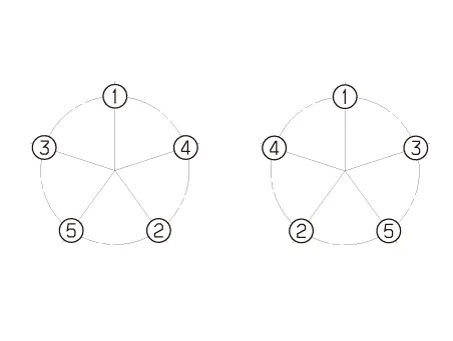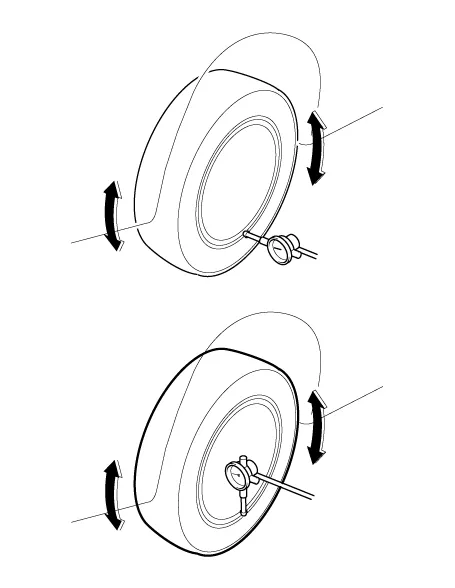Hyundai Palisade (LX2): Tires/Wheels / Wheel
Repair procedures
| Hub nut tightening sequence |
| 1. |
Tighten the hub nuts as follows.
|
| 1. |
Jack up the vehicle.
|
| 2. |
Measure the wheel Run-out by using a dial indicator as illustration
below.
|
| 3. |
If measured value exceeds the standard value, replace the wheel.
|
Repair procedures Tire Wear • Using tires and wheel other than the recommended sizes could cause unusual handling characteristics and poor vehicle control, resulting in a serious accident.
Repair procedures Front Wheel Alignment • When using a commercially available computerized wheel alignment equipment to inspect the front wheel alignment, always position the vehicle on a level surface with the front wheels facing straight ahead.
Other information:
Hyundai Palisade (LX2) 2020-2026 Service Manual: Description and operation
Description The smart cruise control system allows a driver to program the vehicle to control the speed and following distance by detecting the vehicle ahead without depressing the brake pedal or the accelerator pedal. 1.
Hyundai Palisade (LX2) 2020-2026 Service Manual: Components and components location
Categories
- Manuals Home
- Hyundai Palisade Owners Manual
- Hyundai Palisade Service Manual
- Power Outlet
- Rear Heater Unit
- Electronic Child Safety Lock System
- New on site
- Most important about car




